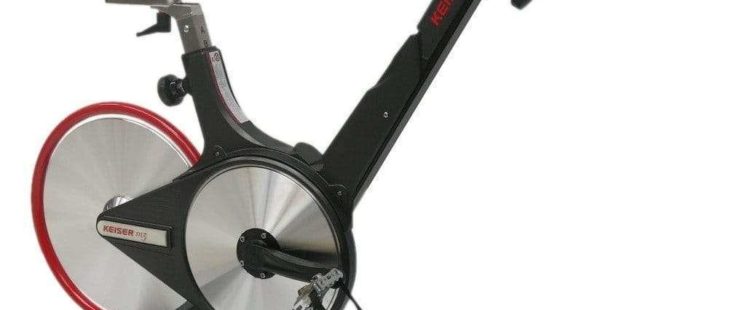Disclosure: I may earn affiliate revenue or commissions if you purchase products from links on my website. The prospect of compensation does not influence what I write about or how my posts are structured. The vast majority of articles on my website do not contain any affiliate links.
18 months later: I never expected we’d get to a point where the exercise bike has become one of the most valuable possessions one can have. Prices have skyrocketed, even for refurbished bikes. Personally, I rented an M3 for a few months from a closed gym, then purchased one from another gym at a price that, frankly, was a steal.
I’ve refrained from editing my review in any major way. One thing that must be mentioned now is that the M3 was succeeded by the M3i which fixes some of my complaints about the technology. With add-ons, you can connect it to Peloton and other apps. Some people actually use it as a Peloton replacement. Though the ride quality is identical, this isn’t an M3i review. If you’re considering an M3i purchase, read this review with the knowledge that the M3i has had some notable technology improvements.
Introduction (skip this if you’re in a rush)
Over the last ten years, I’ve spent a lot of time on exercise bikes. In high school, I rode countless miles while nursing injuries and cross-training. Since moving to Chicago, my secret to staying in shape while maintaining an extremely unhealthy diet has been cranking up the resistance and pedaling for as long as I can.
Nearly all of my mileage has been done on a specific model–the Keiser M3. It’s the stationary bike that you’ll find in spin classes and gyms that aren’t mediocre. It’s a bullet-proof, professional-grade piece of equipment also available to consumers for the advertised price of $1,795.00.
Is that a crazy amount of money to spend on a bike that never leaves your living room? That’s the main question. People thought Peloton’s price point was insane at launch. People used to try to convince me that paying anywhere near a month’s rent for a stationary bike was insane. I wonder what’s happened to those people. I don’t hear much from them anymore.
I’ve spent a long time thinking about it and, as I’ve read review after review, I’ve realized that nobody has connected all the dots regarding the M3. Is it a Peloton slayer? Hopefully, you’ll find yourself better equipped to make a purchasing decision or just to understand the nuances of my favorite bike.
What Makes Keiser a Leading Brand?
The Keiser bikes and ellipticals are premium machines. Two decades ago, the two Keiser brothers got together and started inventing resistance mechanisms using magnets and other advanced scientific concepts. They produced the first bike to use magnetic resistance. The result is that once you put in a few rotations on a Keiser M3, you simply can’t return to a cheaper stationary bike. The ride is smooth because the resistance is applied using magnets rather than the traditional knob that applies pressure in a way similar to brake pads. Additionally, the magnets don’t degrade like other applicators, so each one of the M3’s 24 resistance settings will always remain the same difficulty.
“Smooth” is, perhaps, an understatement. The quality of the ride is unparalleled, with basically everyone who has ever used one preferring it to Peloton or Nordictrack.
Durability & Ergonomics
There are few moving parts and little to worry about from a durability perspective. The manufacturer makes the bold claim: “nearly maintenance-free.” In my opinion, a single-owner bike should last literally forever with no maintenance. However, in a shared setting, the pedals, pedal straps, and cages do wear and break, but almost exclusively from misuse. I suppose the saddle can wear as well but I’ve never seen one in desperate need of repair.
Adding to the durability and the coolness of the bike, you’ll notice that the flywheel and many of its supporting components are located in the rear of the bike. It turns out that the contraption was moved from the traditional place in the front of the frame to protect it from your sweat and the corrosion your sweat can cause.
The bike’s handlebars, saddle, and stem are easy to adjust. If necessary, any of these can be done on the fly. When comparing a competitor with a Keiser, the quality of the adjusting knobs and levers is important to note. Some reviewers note that the adjustment system is imperfect. I strongly disagree. I certainly set up the bike differently when I am riding hard while leaning over the bars compared to when I am just warming up, but the only occasional discomfort I have felt is when sitting on the hard seat while I was very skinny. The truth is that, unless you’re a professional cyclist or a neurotic bike-fitter, there’s no body type or stance that the Keiser M3 can not accommodate.
Is this the perfect bike, then? No.
Computer / Metrics / Connectivity
The biggest disappointment with the bike is the onboard computer. First released in 2007, it is now extremely outdated. It is the main reason why I have not purchased the bike. It shows total time, resistance, current watts, current kcalories burned, heart rate (if you have a monitor), and RPMs. According to a video ad (released in 2017!) this is “everything that a rider needs to know.” I strongly disagree.
First, a bit about how the wattage is calculated:
“Watts are calculated from the gear setting. A potentiometer is attached to the magnet holder (the round cone shaped disc at the end of the shifter cable). As the shifter is moved, the cable rotates the magnet holder. A potentiometer is rotated by the rotation of the magnet holder, thus feeding information to the computer on the position of the magnet holder. The rotation of the potentiometer is broken down into 24 gear settings. A dynamometer was used to test and develop a table of wattage at various gear settings and speeds. The speed of the crank is determined by a magnet attached to the large pulley on the right crank arm and a magnetic switch attached to the circuit board in the magnet holder assembly. Each time the magnet on the pulley passes by the magnetic switch, a signal is sent to the computer to compute the RPM’s of the crank arm. Power equals force times velocity. The force is determined by the magnet position and the speed by the crank speed. The lookup table is programmed into the computer and the computer simply looks at the gear setting and speed and goes to the lookup table to find and display the Watts for those two settings.”
This is not the worst thing in the world. The only thing wrong with this is that the gear settings each have a decent amount of leeway and this is never reflected accurately. For example, if you’re in gear 14, you can move the lever up or down a little bit and decrease or increase the (real) resistance while still being in gear 14. However, since the bike’s lookup table only sees “gear 14,” you remain at the same wattage at identical RPMs. By the same logic, a “high” 14 might be a sliver below 15 yet a rider in 14 would be awarded none of the wattage.
The larger issue is the “trip” distance in the digital display. For years, I thought this was kilometers. Then I thought it was miles. Then, I realized that it seemed to only be linked to total rotations, not wattage. It turns out, I was right. One unit of trip distance is equal to 200 rotations of the flywheel, which has no basis in reality (or exertion). So, if you are working out and aren’t keeping a mental image of what intensity you used for which segment, how do you estimate your total effort? Trip distance is a lie and watts are only accurate to that point in time, so you’re stuck looking at… calories burned. I know this might seem like a nitpick, but, trust me, most riders will be flabbergasted to learn that their distance has never been influenced by their resistance.
Okay, so you’re stuck relying on watts and calories burned. For whatever reason, these two metrics rotate back-and-forth on your display. It’s impossible to make one of them stick, which can be frustrating.
Another issue is that there’s no lap or split functionality. I regularly ride intervals, and not having this function means I either have to use my phone or watch as a peripheral or just hope that my brain is able to remember and organize times at 5:30 AM (this never works).
It’s heralded as the first onboard computer. Now, unfortunately, it’s in last place in its price range.
Customer Support
Keiser has best-in-class customer support. This is extremely rare, even in the premium fitness space. Any time I’ve had an eccentric question, they’ve been happy to assist quickly. They keep a complete stock of replacement parts that ship quickly. I’ve even heard that Keiser support will Facetime you to help assemble your bike or diagnose an issue. Incredible!
Further edit: I wrote the above part wanting to give Keiser the benefit of the doubt. Most of this was based on anecdotes from various Facebook groups. My actual experience dealing with Keiser support has been awful. When I was first trying to determine whether a converter could be used to produce Bluetooth signals, the support agent was rude and unhelpful. It seems they might be penalized for writing responses that are longer than one sentence. Later, when I was experiencing a clicking noise in my bike, the other support rep was also completely unhelpful and recommended I buy the wrong part.
Highlights:
Kyle Anderson, 10/2020
KA: The frame tolerance is different, the lower board wont fit into it and trying to force it cracks the read switch sensor, frame was changed in 2015
TO: Okay, thanks. How much does the conversion cost? Depending on the cost, I’d be totally fine risking it and needing to build a custom enclosure of some sort, since this is just for home use.
KA: Apologies but it simply will not work with your bike.
TO: I will accept this, but I need to know what part of it won’t work. Is it a difference in the data protocol actually used on the older bike, a connector/adaptor incompatibility, or an issue with form factor as you originally stated? Since this info isn’t displayed on your website, there is a lot of discussion and hacky solutions shared all over online enthusiast communities. Would be really helpful to get this info from the source.
KA: The frame port for the lower board is to small for the current production one for the M3i it will not fit there is no work around for this.
TO: Hi Kyle, can you explain in more detail? Assuming the “lower board” is a circuit board inside the frame. What is a “frame port” and what won’t fit?
KA: As stated and only explanation needed is your bike is too old to take the upgrade, you have the old style frame pre 2015 the only way for you to upgrade is to buy a new upper frame which is basically the price of a new bike.
TO: Hey Kyle, I’m not understanding. What is too old—what specifically is not compatible or doesn’t fit?
KA: Any bike made before 2015 can not be upgraded to m3i yours was made in 2011 its too old.
TO: What specifically makes the bike too old?
KA: The information you are requesting still was provided on previous replies, please go back and review the responses.
TO: I am asking for more information. I don’t have any concept of what a “lower board,” “frame port,” or “frame tolerance” is. Specifically, I can’t grasp whether this is a technology incompatibility issue or a frame ergonomics issue.
KA: A part that fits into the frame on newer bikes will not fit correctly into your older bike
*I stop replying*
Paul Artega, July/October 2021
The WordPress editor keeps glitching when I try to format the entire conversation. The summary is that I was told to buy some parts in July after the support rep did zero diagnostic work to help me determine what my issue was. During that conversation, just like with Kyle, I had to ask several times for all my questions to be answered. When I went to make the repair a few months later, it was clear that none of the parts I bought were going to help. After some pandering by me, I was then sent a PDF for another set of parts with the explicit heading “Condition: Click sound while pedaling.” This was my exact issue. I then sent him a video to help diagnose the problem but he continued making statements such as “I don’t have to bike in front of me to properly diagnose it.”
Again, there was no empathy for the customer here and the level of service, especially from a US-based support rep, was just terrible.
Summary
All in all, this is a phenomenal bike hampered by an outdated digital display. The price, coupled with the fact that I’d need a slew of add-ons (namely the Favero Assioma Duo, which I purchased long after writing this original review) to get it to produce stats like other modern bikes makes this an unattractive purchase if I’m paying full price. However, if you can find a used bike selling for less than 50% of the retail price, it’s the best value for the money, no question. Happy riding.
Link to purchase the updated Keiser M3i




